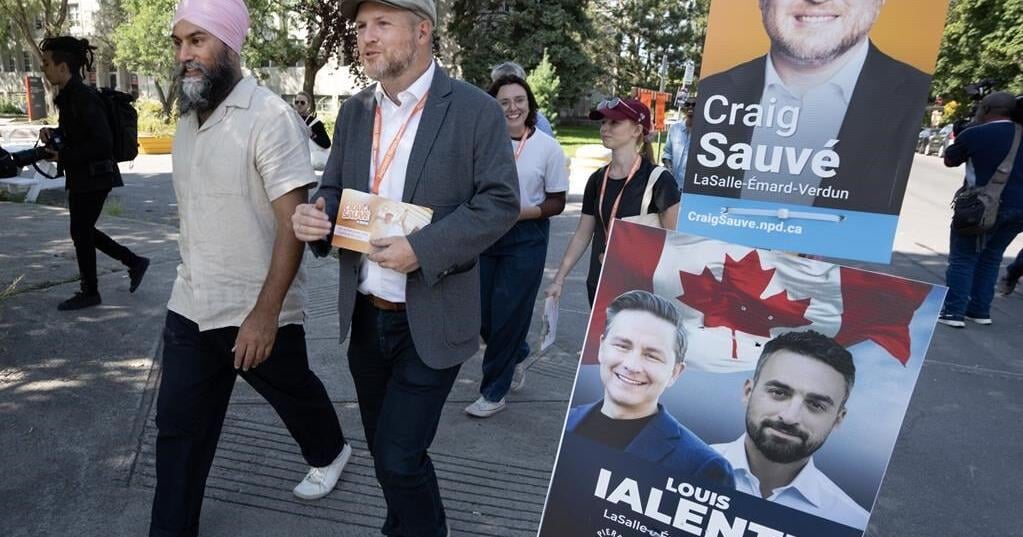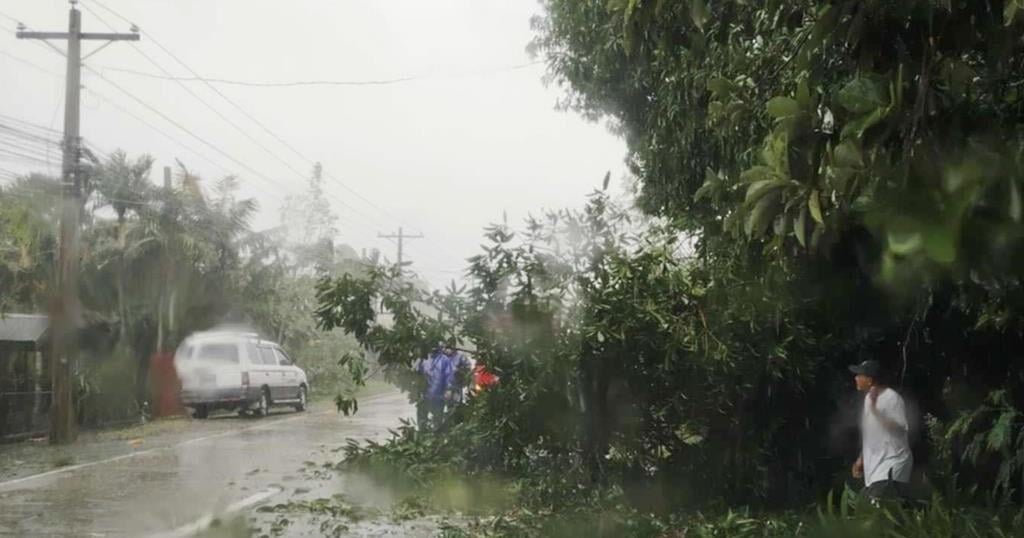MONTREAL – Advanced voting kicked off on Friday in Montreal’s LaSalle-Émard-Verdun riding, and party leaders are helping get out the vote as the federal byelection on Sept. 16. draws nearer.
Polls show a three-way battle emerging between the Liberal Party of Canada, the Bloc Québécois and the New Democratic Party and although LaSalle-Émard-Verdun is considered a Liberal stronghold, the NDP candidate in the race, Craig Sauvé, says he is fired up.
“I’m feeling the vibe of an election we can win. I’ve had that feeling in the past,” said Sauvé, who is also a city councillor in Montreal Mayor Valérie Plante’s administration.
“Among the three main parties, we have the biggest army of volunteers. There are hundreds of them,” said the 43-year-old as he went door-to-door with NDP Leader Jagmeet Singh.
As they passed in front of Lévis-Sauvé elementary school, teacher Céline-Audrey Beauregard recognized Sauvé and called him by his first name.
“I know you’re busy, but we’d like to invite you to our class,” said Beauregard, catching her breath.
“I was talking to my students about the byelections, so I took off running when I saw you pass by the window,” Beauregard said, adding that a fellow teacher was watching her students.
“When we go door-to-door, there’s always someone who says, ‘thank you for helping me with this or that, or for solving this problem,’” Singh responded when asked why he thought his party had a chance of coming out on top. “People love Craig.”
“The Liberals have abandoned you. People are having trouble paying for groceries and they’re having trouble paying the rent,” Singh continued, arguing the NDP was bringing back hope.
Standing outside an advanced polling station, a man named George, who described himself as a “senior citizen looking for housing,” declined to say who he voted for.
“All of the parties spoke well on the issue during the campaign,” he said.
However, Paola Castro, who also voted early, was not shy about revealing who got her vote.
“I don’t want to go into details because sometimes we get judged because of our ideas, but I made a decision based on my principles, and I’m voting for (Conservative Leader) Pierre Poilievre,” said Castro.
For her part, Diane Kipling voted in advance to help the NDP team of volunteers.
“It helps the party know who voted in the riding, so it’s less work for them when it’s time to get out the vote on election day,” she said.
Another candidate also bearing the surname Sauvé, Louis-Philippe Sauvé, was canvassing in front of a local Metro station.
“My candidacy is based on the conviction that I can win, and I will win,” said Sauvé, who is running for the Bloc Québécois.
He says the issues voters are raising vary depending on which part of the riding they live in.
“In Ville-Émard, they talk to me a lot about public safety, while in Verdun, they’re going to talk to me about the environment, climate change (and) housing because the housing crisis is particularly acute there.”
The Bloc Québécois is planning to send a delegation to the riding to help their candidate out on Wednesday.
Meanwhile, the Liberal Party is backing its candidate, Laura Palestini, after it suffered a surprise defeat by the Conservatives in the Toronto-St. Paul’s byelection back in June. The Liberals have taken to X, posting pictures of senior cabinet ministers like François-Philippe Champagne, Steven Guilbeault, Mélanie Joly, Pablo Rodriguez and Marc Miller campaigning alongside Palestini.
The riding was previously held by former Liberal MP and cabinet minister David Lametti until his resignation in January.
Palestini did not tell The Canadian Press where she was campaigning on Friday, and her team did not respond to requests for comment.
As for the Conservatives, Louis Ialenti is running as the party’s candidate in the race, but like the Liberals, Poilievre’s party did not respond to requests to meet the candidate in the field.
This report by The Canadian Press was first published Sept. 7, 2024.





















